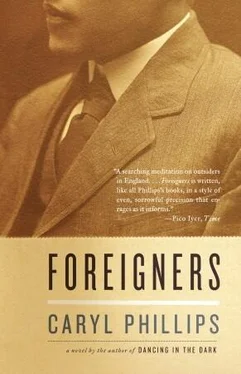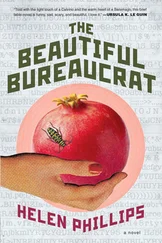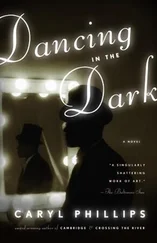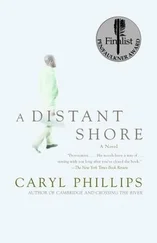Some time after the interment the Warwickshire coroner, Mr S. Tibbets, concluded his findings by suggesting that Randolph Turpin appeared to have been an impulsive and generous man who had given away a large part of his earnings in the ring, and in some way this had led to the present tragedy. Turpin's one-time business partner, Leslie Salts, went further, describing Turpin as 'intelligent in some respects but childish in others. You can tell people what is the best for them,' he said, 'but they don't always take notice.' This, of course, was somewhat ironic coming from a man who made a handsome profit from Turpin, and who had enjoyed the most successful and lucrative years of his life because of the efforts of the now deceased boxer. The coroner read aloud part of a note that Turpin had written and left pinned to a bedroom door before his death. In the note, Turpin made it clear that he felt that he was 'having to carry the can for money owing to the Inland Revenue'. He continued and insisted that his mind was clear and not disturbed. As it transpired, the verdict of the Coroners' Court agreed that this was most likely the case. The entry on the death certificate of Randolph Turpin records that the cause of death was as a result of:
Gunshot wounds of the heart
Self-inflicted (Suicide)
On 14 May, 1966, three days before Turpin's death, yet another letter from the Inland Revenue had arrived at the transport café in Leamington Spa, this one claiming £200 that was due as a result of non-payment of tax on the income from some of Turpin's wrestling engagements. The latest demand seemed unnecessarily harsh to Turpin and this news, together with the increasing likelihood that the local council was about to exercise the compulsory purchase order on the café, and thereby render Turpin and his wife and four daughters homeless, caused the former fighter to slip into an even deeper trough of depression. By now Gwen was used to enduring her husband's moods so she knew that there was little that she could do beyond wait and hope that his anxiety might soon subside. Three days later, on 17 May, Turpin was working in the café with his wife. After lunch the two older daughters, eleven-year-old Gwyneth and nine-year-old Annette, went back to school, while Turpin went upstairs to check on four-year-old Charmaine, who was suffering from a cold. After a few moments Turpin came back down and told his wife that the child was sleeping, and then he went back upstairs. Their youngest daughter, Carmen, who was almost two years old, followed her father. Shortly after 2:30 p.m. a curious Gwen went upstairs to check that everything was fine. She saw her husband on the floor between some packing cases and the bed, and she noticed bloodstains on the blanket. Her motionless husband looked as though he had tumbled from the bed, and her daughter, Carmen, was sitting on the floor beside her father, but the crying child was surrounded by a pool of blood. Gwen snatched up Carmen and ran with the child to Warneford Hospital where the authorities informed her that her daughter had been shot. Back at the café neighbours had already called the police, but the word on the street was that Turpin had shot himself twice with a.22 calibre revolver, once to the left side of the head and then fatally in the heart. He had used the same weapon to shoot his youngest daughter twice, and one bullet was lodged near Carmen's brain and the other had punctured her lung. Their local hero was dead, and his youngest daughter was fighting for her life.
Two weeks after Turpin's suicide, Gwen Turpin sold her story to a Sunday newspaper. Carmen was now out of danger, and it was clear that she was going to survive, but Gwen was still trying to find some justification for what her husband had done to their child. In the newspaper she said, 'I think he wanted to take her with him because he had begun to look on the world as a place not fit for her to live in.' But Gwen knew that this was a world that she and her children would have to continue to live in, and she was now determined to protect her four children from any scrutiny and, if truth be told, from the Turpin family with whom, Turpin's elderly mother aside, she wished to have no further dealings. Never wishing to set foot again in the transport café, and realising that she could only stay with friends for so long, once it was safe for Carmen to travel Gwen took herself and the girls off to Prestatyn in North Wales. Gwen went home, remembering that her late husband had told her that she should always try and visit the Great Orme, for that's where they had been happy. In many respects, it was her love and support, and Turpin's devotion to his daughters, that had enabled him to survive the years of debt and anxiety that followed his retirement from boxing. His love for his family had meant that he persevered even when he could see no future, but in the end life's pressure finally defeated this proud warrior. But in Gwen, who was anything but a shy, retiring Welsh Valley girl, he had found a sustaining love, and after his death she deeply mourned the loss of her beloved husband. Eventually, short of cash, Gwen sold her late husband's Lonsdale belt for £3,000.
In 2001, exactly fifty years after Turpin shocked the world and defeated Sugar Ray Robinson, an imposing 8'6'' statue of Randolph Turpin in boxing pose, on a five feet high stone plinth, was unveiled in the centre of Warwick. On the bronze plaque below his feet are inscribed the words:
In Palace, Pub, And Parlour
The Whole of Britain Held Its Breath.
And beneath this ' Celer Et Audax ' — Latin for 'Swift and Bold' — the motto of the King's Royal Rifle Corps with whom Turpin's father served during the First World War. Thirty-five years earlier, in 1966, Gwen Turpin had already chosen her own memorial words and had them inscribed on her husband's headstone. Randolph Turpin may have ruled the world for an extremely brief sixty-four days, but whatever his troubles she wanted this stubborn, often naïve man to be remembered as an English hero.
TO
THE DEAR MEMORY OF
RANDOLPH ADOLPHUS
TURPIN
DEVOTED HUSBAND OF
GWYNETH
AND FATHER OF
GWYNETH, ANNETTE,
CHARMAINE & CARMEN
WHO PASSED AWAY
17 MAY, 1966. AGED 38
World middleweight
boxing champion 1951.
*
Annette is the older of the two Turpin girls sitting before me. Both Annette and Charmaine are now in their forties, and there is a joy to their faces and demeanour which immediately challenges any notion of seeing the story of their father as a tragic one. Charmaine's eleven-year-old son Ieuan sits to her side. Opposite him, and next to me, sits sixteen-year-old Rachel. She is Carmen's daughter, and both she and her cousin are quiet and conscientiously polite. It is now forty years since Randolph Turpin died, and on this hot July afternoon we are having lunch at an Italian restaurant on London's South Bank, only a few hundred yards from the National Film Theatre where some twenty-one years ago I watched a poignant documentary film about Randolph Turpin. Annette smiles. She informs me that she too was in the audience that day, and she liked the film about her father. But that is all that she says; that she liked it, nothing more. We decide to order lunch.
Annette lives in South London, where she is a psychiatric nurse working with children and adolescents in a hospital outpatient department. Charmaine has travelled down with the two children from Prestatyn in North Wales, where she is employed by a company that manufactures military equipment. She is planning on spending the weekend with her sister. Carmen was due to accompany her, but she has recently found another job and so she has decided to stay behind in Wales. Gwyneth, the oldest sister, died of Hodgkin's disease in 1987, and their mother Gwen died in May 1992. She never remarried. As Annette and Charmaine study the menu, I look closely at the sisters and can see that they both have something of the Randolph Turpin twinkle in their eyes. They lay down their menus and then break into charismatic smiles which remind me of the film footage I have seen of their father being interviewed as he prepared to board the Queen Mary and sail to New York for the first time. However, it is the young boy, Ieuan — the grandson — who is truly blessed with his grandfather's features. I wonder how much he knows about Randolph Turpin, or if he is even interested. 'HMS Belfast and the Imperial War Museum,' says his mother, 'that's what Ieuan likes to visit when he comes to London.' Did Ieuan know that his grandfather, and his grandfather's brothers, served in the military during the Second World War? Did Ieuan know that his West Indian great-grandfather was wounded in the First World War and suffered wounds that later killed him?
Читать дальше











![Unknown - [Carly Phillips] The Bachelor (The Chandler Brothe(Bookos.org) (1)](/books/174132/unknown-carly-phillips-the-bachelor-the-chandle-thumb.webp)
